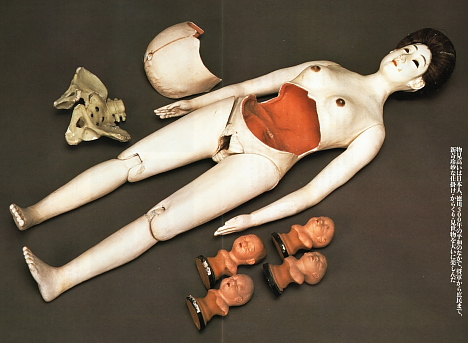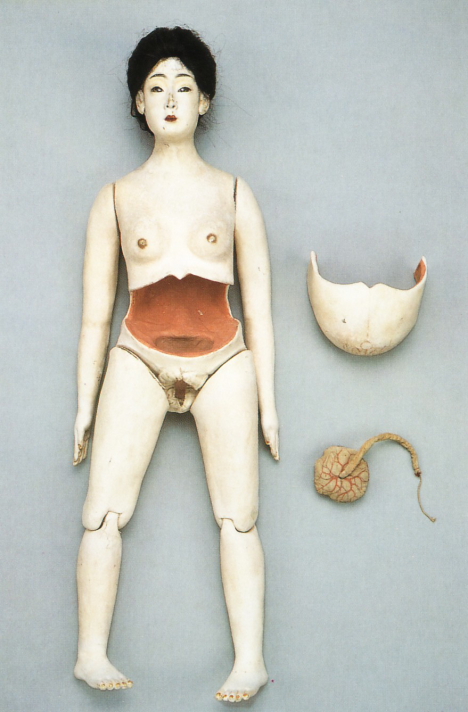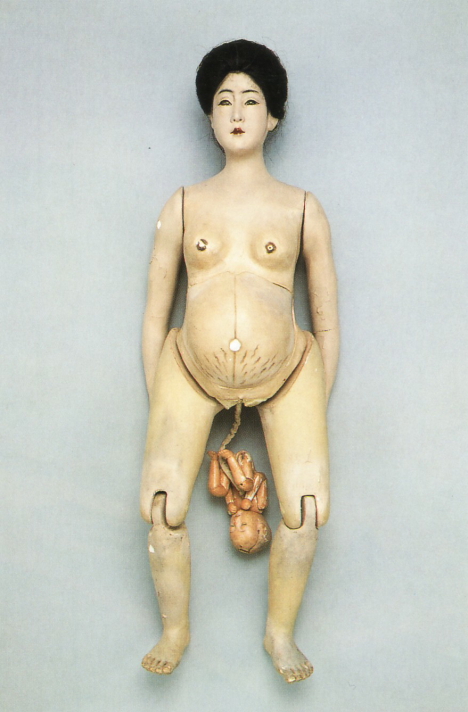 Ravage used to transform from a cat into a cassette, but those weird, tapey things are a little old for fans of the bold, new, LeBouf'd version of the franchise. How about a USB drive?
Ravage used to transform from a cat into a cassette, but those weird, tapey things are a little old for fans of the bold, new, LeBouf'd version of the franchise. How about a USB drive?
 Ravage used to transform from a cat into a cassette, but those weird, tapey things are a little old for fans of the bold, new, LeBouf'd version of the franchise. How about a USB drive?
Ravage used to transform from a cat into a cassette, but those weird, tapey things are a little old for fans of the bold, new, LeBouf'd version of the franchise. How about a USB drive?
Posted by Hanibal Wednesday, May 20, 2009 at 12:41 AM 0 comments Labels: Accessories, ravage, Ravage transformer flash drive, Ravage transforming flash drive, Transformers, Transformers flash drive, Transformers usb stick, USB
The Gear: E-Mu's Pipeline low-latency wireless music system, which lets you cut the cord on your guitar-and-amp rig for about $200, or add portable wireless connections to your home sound system. The Price: Each module costs $100, and you need at least two to make things happen, so you're looking at $200 or even $300 to start.
The Verdict: It's a unique set of wireless toys that is a lot of fun to play with, and would have been a must-have back when I used to play guitar in a band. But these things can be cool even in the home of a total non-musician, which is why I'm bringing them up at all.
Think of it as Sonos Portable. You set one of them to transmit, and start playing a song from your computer, iPod, any audio source at all really, including, mind you, a CD or DVD player with S/PDIF output. Set another one to receive, then attach that to earphones, a boom box or your home theater system, and you hear everything with no latency. Well, with about 10 milliseconds of almost totally unnoticeable latency. In "broadcast" mode, you an add additional Pipelines—E-Mu says "any number of receivers"—so that many rooms, or many people, can catch your tuneage at the same time.
Of course, if you do play music, you can plug your guitar into one, set it for "pairing" mode, stick another one at your amp set to receive. In this scenario the latency is just 6.6ms, and you are suddenly completely unfettered.
I tested it in my house using prerecorded audio, and it sounded great. I stuck my computer with the source music down in the basement, and clipped a receiver to my belt with headphones plugged in, and wandered throughout the house. The signal faltered only when I was at the absolute farthest point away from the source, which probably was right around the advertised 15 meters (49 feet) of range that these babies can get.
Battery life is good, perhaps the big reason this thing even brushes the $100 point: You get 10 hours in receive mode, and 5 while transmitting.
The only issue I ran into, if you could call it that, was the "DIP switch" setup, which you can see in the rear shot above. I am not afraid of a few switches, but it seemed a complex way to set the channel, the receive or transmit mode, and the audio preferences. Not sure what would have been better, and once you set them, you can almost forget them, but it was, initially, a bit of a pain.
These babies aren't cheap, but setting up a way to wirelessly listen to music at home (like, say, piping music outdoors, syncing music between multiple rooms, or even walking around with earphones, listening to music playing somewhere else) seems worthwhile for $200, and the one-to-many broadcast mode makes it quite a unique product. My only gripe is that it would be cool if E-MU made an even better priced unit without the battery, so you could pick and choose.
Posted by Hanibal at 12:38 AM 0 comments Labels: E-mu pipeline, E-mu systems, pipeline, Review, Sonos |, wireless audio
 I love a good high-def movie, and Blu-ray players are sweet. Only they're so feature rich, the discs themselves are an afterthought—DOA or relegated to a niche format reserved for the finest films.
I love a good high-def movie, and Blu-ray players are sweet. Only they're so feature rich, the discs themselves are an afterthought—DOA or relegated to a niche format reserved for the finest films.
Oh, come on—you can't tell me you don't see where this is going. Even though the format has grown 72% in the last quarter, every Blu-ray player we choose to review has an abundance of features that have nothing to do with Blu-ray. In fact, they all have to do with delivering movies in a different way, with more instant gratification.
The joke is, when we were pushing for Blu-ray 2.0 with BD-Live a year ago, we didn't realize that the ethernet port was really not about enhanced Blu-ray at all, but about video on demand. I own a few Blu-rays, like Wall-E, that have BD-Live components. Never even bothered with them. No point. But you'd be a 'tard to buy a Blu-ray player without an ethernet port, and you'd be a 'tard to buy a Blu-ray player without Netflix on demand, and at this point, another service for new-release movies, like Amazon VOD or CinemaNow.
Netflix gives me back seasons of 30 Rock and The Office in high-def. Pop quiz: Will I ever buy them on Blu-ray, or even DVD? No. I can even get stuff I'd have previously hunted down on disc, like The IT Crowd. I can get lots of the movies I previously owned on DVD instantly on demand for no cost other than the $10 monthly subscription. People don't even bitch about DRM with Netflix, because it's instant and always there, so even the copyright owners should be happy. Time Warner's boss even said he's thinking about offering a Netflix-like VOD distribution channel for HBO—nothing like all-you-can-eat Rome, Wire and Band of Brothers to kill DVD sales, and HBO still gets their mad money.
You want to talk video quality? Fine. I own The Dark Knight on Blu-ray. That movie is freakin' awesome, and I am happy to watch it on a Blu-ray player, while I sit exactly 47 inches from a 50-inch 1080p plasma television. But what about Billy Madison? I love that movie too, but I first owned it on a VHS playing in 4:3 at what you might call 240i, and I can verify that the high-def version is no funnier. In fact, instead of fishing out the HD DVD of it I have, and hooking up the HD DVD drive to my Xbox, I'd probably sooner try to find it on Netflix, in whatever video quality they're offering.
Besides, most people—most Giz readers, I'd wager—are watching "high def" movies on LCD TVs they bought at Costco for $899, so you can't tell me that they can see a difference between so-called VOD high-def and real bonafide Blu-ray high-def, even though there definitely is one.
The Criterion Collection belongs on Blu-ray. But six films by Wes Anderson, Terry Gilliam and Akira Kurosawa do not an industry make. Like our discussion of audiophiles, there's a need to preserve (and even appreciate) video at very high quality, but that need doesn't trickle down to the masses, and especially doesn't matter for every single film, or even the vast majority of middle-of-the-road movies and TV. DVDs were a hit because they were the smartest way to deliver most video in the years 1999 to 2007. Now, the smartest way to deliver most video is over broadband, not on high-density shiny discs.
Don't get me wrong. You'll buy a "Blu-ray player." Stats show many of you already are. You may even buy some Blu-ray discs, or pay the extra $2 or $3 for Netflix Blu-ray rental. But the amount of time you'll spend watching Blu-ray on it will continue to dwindle, until, maybe one day, the disc tray just refuses to open from lack of use.
Posted by Hanibal Sunday, May 17, 2009 at 12:20 AM 0 comments Labels: Blu-Ray, Blu-ray discs, Blu-ray players, DVDs, Lg, Rant, Samsung, Top |, TV

19th-century obstetric training doll - Wada Museum
In the 18th and 19th centuries, sideshow carnivals known as misemono were a popular form of entertainment for the sophisticated residents of Edo (present-day Tokyo). The sideshows featured a myriad of educational and entertaining attractions designed to evoke a sense of wonder and satisfy a deep curiosity for the mysteries of life. One popular attraction was the pregnant doll.

“Light-skinned” pregnant doll - Edo-Tokyo Museum
Although it is commonly believed that these dolls were created primarily to teach midwives how to deliver babies, evidence suggests they were also used for entertainment purposes.

“Dark-skinned” pregnant doll - Edo-Tokyo Museum
For example, records from 1864 describe a popular show in Tokyo’s Asakusa entertainment district that educated audiences about the human body. The show featured a pregnant doll whose abdomen could be opened to reveal fetal models depicting the various stages of prenatal development.

Baby doll - Edo-Tokyo Museum
Similarly, records of Japan’s first national industrial exhibition in 1877 indicate a Yamagata prefecture hospital doctor named Motoyoshi Hasegawa showed off an elaborate set of fetus models illustrating seven different stages of growth, from embryo to birth.

Fetus model set (circa 1877) - Toyota Collection
Although it is unclear whether the fetus model set pictured here is the same one Hasegawa showed in 1877, records suggest his model was a hit at the exhibition.

Nothing says “marriage or bust” quite like the Marriage-Hunting Bra (Konkatsu Bra), a new concept lingerie by Triumph International designed to help the marriage-minded woman find a husband by displaying how much time remains until she hopes to tie the knot.
In addition to the easy-to-read LED display that shows the number of days until the wearer’s ideal wedding date, the white lace bra — which has the look and feel of a wedding dress — features a ring holder and convenient pockets for a pen and official stamp seal, which will be needed when filling out the marriage license application.
Triumph, which unveils a new concept bra every six months, hopes the Marriage-Hunting Bra will encourage more people to get hitched, even though it is not for sale. The creators were inspired by Konkatsu-Jidai (”The Times of Marriage-Hunting”), a recent best-seller by Toko Shirakawa that looks at Japan’s declining marriage rate and the growing difficulty that people in their 30s and 40s face when seeking marriage partners.


Recent statistics indicate that 47 percent of men and 32 percent of women in their early 30s are unmarried. These figures appear to be on the rise as people focus more on career than on family, and as people increasingly view marriage as a personal preference, not an essential part of life.
Posted by Hanibal Saturday, May 16, 2009 at 11:58 PM 0 comments Labels: interesting, Konkatsu Bra, LED display, Marriage-Hunting Bra, Tech
 This chair is notable in two ways. One, it's the largest single piece of bendwood used to make a chair, and two, it's the only chair tested by NASA and certified by The Space Foundation.
This chair is notable in two ways. One, it's the largest single piece of bendwood used to make a chair, and two, it's the only chair tested by NASA and certified by The Space Foundation.
Of course, it's also a sweet chair. It's a lot like the Eames Lounge Chair. Your body is cushioned by open cell visco elastic memory foam, used on NASA's spacecrafts, and looks conducive to some serious nap action.
Posted by Hanibal Thursday, May 7, 2009 at 11:32 AM 0 comments Labels: Chair, Chairs, Get Me Off This Rock, lounge chair, Space, Wing, Wing lounge chair
 Who needs clothes on vacation when you can carry two solar panels, a flatscreen TV, DVD player, two-way radio and coffee maker with you wherever you go?
Who needs clothes on vacation when you can carry two solar panels, a flatscreen TV, DVD player, two-way radio and coffee maker with you wherever you go?
Posted by Hanibal at 11:27 AM 0 comments Labels: Louis Vuitton, Louis vuitton solar trunk, Luggage, Solar, Trunk, Trunks

